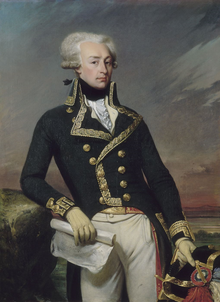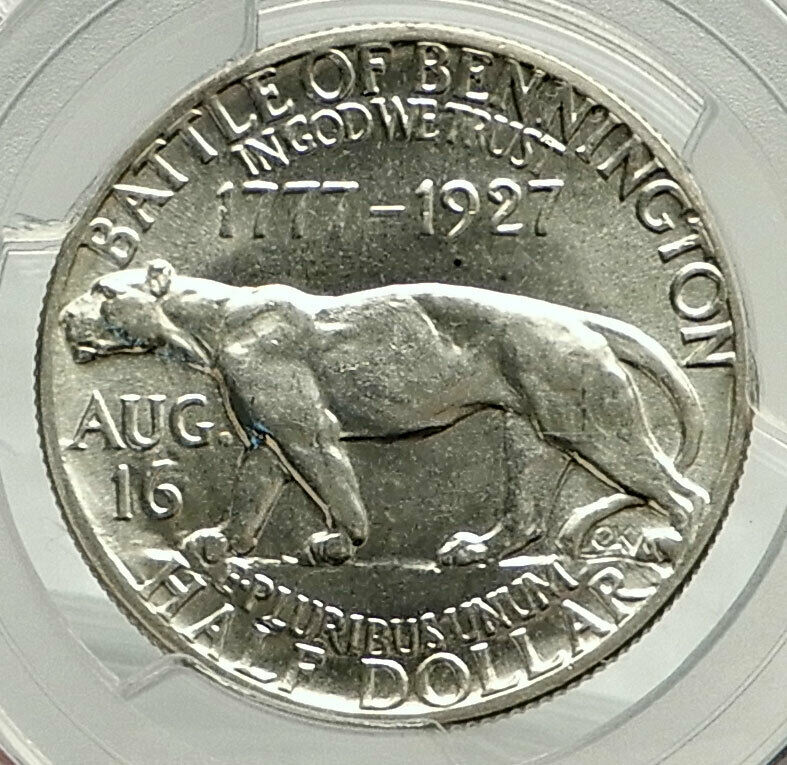|
United States of America – Lafayette Dollar
Erection of Lafayette Monument – Commemorative issue
1900 Silver Dollar 38.1mm (26.73 grams) 0.900 Silver
Reference: KM# 118 | Mintage: 36,026
Certification: NGC Ancients AU DETAILS 4703363-003
* UNITED · STATES · OF · AMERICA * LAFAYETTE · DOLLAR, Jugate heads of George Washington and marquis de Lafayette.
* ERECTED · BY · THE · YOUTH · OF · THE · UNITED · STATES · IN · HONOR · OF · GEN · LAFAYETTE *PARIS * 1900, Statue of Lafaytette on horseback galloping left drawing sword from sheath.
This was the first commemorative coin with the dollar denomination and the first authorized United States coin to feature a portrait of a U.S. president. The dies of the coin were designed by the famous Charles E. Barber. Thes statue was a gift of the American people of General Lafayette erected in Paris. These coins were originally sold by the Lafayette memorial commission to help raise money for $2.
You are bidding on the exact item pictured, provided with a Certificate of Authenticity and Lifetime Guarantee of Authenticity.
The Lafayette dollar was a silver coin issued as part of the United States’ participation in the Paris World’s Fair of 1900. Depicting Gilbert du Motier, Marquis de Lafayette with George Washington, and designed by Chief Engraver Charles E. Barber, it was the only U.S. silver dollar commemorative prior to 1983, and the first U.S. coin to depict American citizens.
Beginning in 1898, prominent Americans sought to erect in Paris a monument to Lafayette, a Frenchman who fought in the American Revolutionary War. Among these supporters was Chicago businessman Ferdinand Peck, whom President William McKinley chose as commissioner-general to the exposition. Peck made the monument proposal a part of the American plans for Paris, and appointed the Lafayette Memorial Commission to raise funds for it. A part of this fundraising was the one-dollar commemorative coin, approved by Congress on March 3, 1899.
Conjoined busts of Washington and Lafayette appear on the obverse. Barber stated that the bases for his work were a sculpture of Washington by Jean-Antoine Houdon, and an 1824 medal of Lafayette by François-Augustin Caunois. For the reverse, he used an early sketch of the planned monument, designed by Paul Wayland Bartlett, whose last name appears on the base of the statue on the reverse. The coins did not sell out, and 14,000 were later melted by the United States Treasury. The Lafayette dollar is valued from several hundred dollars to tens of thousands, depending on condition.

John Ward Dunsmore’s depiction of Lafayette (right) and Washington at Valley Forge
 Marie-Joseph Paul Yves Roch Gilbert du Motier, Marquis de Lafayette (6 September 1757 – 20 May 1834), known in the United States simply as Lafayette, was a French aristocrat and military officer who fought in the American Revolutionary War, commanding American troops in several battles, including the Siege of Yorktown. After returning to France, he was a key figure in the French Revolution of 1789 and the July Revolution of 1830. Marie-Joseph Paul Yves Roch Gilbert du Motier, Marquis de Lafayette (6 September 1757 – 20 May 1834), known in the United States simply as Lafayette, was a French aristocrat and military officer who fought in the American Revolutionary War, commanding American troops in several battles, including the Siege of Yorktown. After returning to France, he was a key figure in the French Revolution of 1789 and the July Revolution of 1830.
Lafayette was born into a wealthy land-owning family in Chavaniac in the province of Auvergne in south central France. He followed the family’s martial tradition and was commissioned an officer at age 13. He became convinced that the American cause was noble in its revolutionary war, and he traveled to the New World seeking glory in it. He was made a major general at age 19, but he was initially not given American troops to command. He was wounded during the Battle of Brandywine but still managed to organize an orderly retreat, and he served with distinction in the Battle of Rhode Island. In the middle of the war, he sailed for home to lobby for an increase in French support. He returned to America in 1780 and was given senior positions in the Continental Army. In 1781, troops under his command in Virginia blocked forces led by Cornwallis until other American and French forces could position themselves for the decisive Siege of Yorktown.
Lafayette returned to France and was appointed to the Assembly of Notables in 1787, convened in response to the fiscal crisis. He was elected a member of the Estates-General of 1789, where representatives met from the three traditional orders of French society: the clergy, the nobility, and the commoners. After forming the National Constituent Assembly, he helped to write the Declaration of the Rights of Man and of the Citizen with Thomas Jefferson’s assistance. This document was inspired by the United States Declaration of Independence and invoked natural law to establish basic principles of the democratic nation-state. He also advocated the end of slavery, in keeping with the philosophy of natural liberty. After the storming of the Bastille, he was appointed commander-in-chief of France’s National Guard and tried to steer a middle course through the years of revolution. In August 1792, radical factions ordered his arrest, and he fled into the Austrian Netherlands. He was captured by Austrian troops and spent more than five years in prison.
Lafayette returned to France after Napoleon Bonaparte secured his release in 1797, though he refused to participate in Napoleon’s government. After the Bourbon Restoration of 1814, he became a liberal member of the Chamber of Deputies, a position that he held for most of the remainder of his life. In 1824, President James Monroe invited him to the United States as the nation’s guest, and he visited all 24 states in the union and met a rapturous reception. During France’s July Revolution of 1830, he declined an offer to become the French dictator. Instead, he supported Louis-Philippe as king, but turned against him when the monarch became autocratic. He died on 20 May 1834 and is buried in Picpus Cemetery in Paris, under soil from Bunker Hill. He is sometimes known as “The Hero of the Two Worlds” for his accomplishments in the service of both France and the United States.
 Paul Wayland Bartlett (January 24, 1865 – September 20, 1925) was an American sculptor working in the Beaux-Arts tradition of heroic realism. He was born in New Haven, Connecticut, the son of Truman Howe Bartlett, an art critic and sculptor. Paul Wayland Bartlett (January 24, 1865 – September 20, 1925) was an American sculptor working in the Beaux-Arts tradition of heroic realism. He was born in New Haven, Connecticut, the son of Truman Howe Bartlett, an art critic and sculptor.
When fifteen he began to study in Paris under Emmanuel Frémiet, modelling from animals in the Jardin des Plantes. He won a medal at the Paris Salon of 1887, and was elected as a member of the jury for the Paris Exposition Universelle of 1889 and again at the Exposition of 1900, each time sacrificing his own opportunities of receiving medals. He was twenty-nine when the Cross of a Chevalier of the Legion of Honor was bestowed upon him. In 1903, he collaborated with the dean of American sculptors, John Quincy Adams Ward, on the models for the pediment sculptures of the New York Stock Exchange; the pediment figures were carved by the Piccirilli Brothers.
Bartlett’s masterwork was the House of Representatives pediment at the U.S. Capitol building, The Apotheosis of Democracy, begun in 1908 and completed in 1916. Among his other principal works are Bohemian Bear Tamer, in the Metropolitan Museum of Art, New York; the equestrian statue of Lafayette, in the Cours Albert 1er, Paris, presented to the French Republic by the schoolchildren of America; the powerful and virile bronzes Columbus’ and Michelangelo inside the Library of Congress; the Ghost Dancer, in the Pennsylvania Academy, Philadelphia; the Dying Lion; the equestrian statue of McClellan in Philadelphia; and a statue of Joseph Warren in Boston, Massachusetts. His bronze patinas of reptiles, insects and fish, several of which are in the collection of the Berkshire Museum, are also remarkable.
In 1895, he was named a Chevalier of the French Legion of Honor. In 1916 he was admitted to the American Academy of Arts and Letters.[6] He was also a member of the National Sculpture Society and the International Society of Sculptors, Painters and Gravers.[7]

Paul Bartlett’s statue of Lafayette in Cours Albert 1er, Paris
|










 Marie-Joseph Paul Yves Roch Gilbert du Motier, Marquis de Lafayette (6 September 1757 – 20 May 1834), known in the United States simply as Lafayette, was a French aristocrat and military officer who fought in the American Revolutionary War, commanding American troops in several battles, including the Siege of Yorktown. After returning to France, he was a key figure in the French Revolution of 1789 and the July Revolution of 1830.
Marie-Joseph Paul Yves Roch Gilbert du Motier, Marquis de Lafayette (6 September 1757 – 20 May 1834), known in the United States simply as Lafayette, was a French aristocrat and military officer who fought in the American Revolutionary War, commanding American troops in several battles, including the Siege of Yorktown. After returning to France, he was a key figure in the French Revolution of 1789 and the July Revolution of 1830.  Paul Wayland Bartlett (January 24, 1865 – September 20, 1925) was an American sculptor working in the Beaux-Arts tradition of heroic realism. He was born in New Haven, Connecticut, the son of Truman Howe Bartlett, an art critic and sculptor.
Paul Wayland Bartlett (January 24, 1865 – September 20, 1925) was an American sculptor working in the Beaux-Arts tradition of heroic realism. He was born in New Haven, Connecticut, the son of Truman Howe Bartlett, an art critic and sculptor. 





